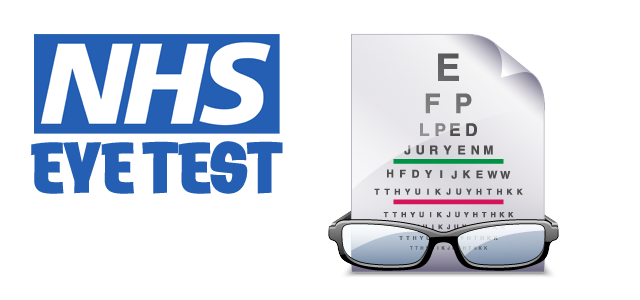![]()
Jack Brown Eyecare, Edinburgh Opticians.
Email: info@jbeyecare.com
Jack Brown Eyecare Branches
30 Elder Street, Edinburgh EH1 3DX
Tel: 0131 557 3531
Open in Google Maps
Westside Plaza, Edinburgh EH14 2SW
Tel: 0131 442 2333
Open in Google Maps

What is Dry Eye?
Tears serve to lubricate the eye and they are produced around the clock, but when insufficient moisture is produced stinging, burning, scratchiness and other symptoms are experienced and may be referred to as Dry Eye, Keratitis Sicca, Keratoconjunctivitis Sicca (KCS) or Xerophthalmia.
When we blink, tears form a film which spreads over the eye, making the surface smooth and optically clear and enabling good vision. There are three layers in the thin film of tears: an oily layer, a watery layer and a layer of mucus, each with specific function. The outermost, oily layer is produced by small glands at the edge of the eyelid (meibomian glands) and the main purpose of this layer is to smooth the tear surface and reduce evaporation. The middle, watery layer, is produced by small glands scattered through the conjunctiva, (the delicate membrane lining the inside of the eyelid) and by the large lacrimal (tear) gland. This layer cleanses the eye and washes away foreign particles or irritants. The innermost layer consists of mucus which allows the water layer to spread evenly over the surface of the eye. Without mucus, tears would not adhere to the eye.
What causes it?
Dry eye is caused when the tear gland produces insufficient tears. This can happen as part of the normal ageing process, and is more common among women so although the condition is not common it tends to occur with increasing age when it is not always noticed because the effect of dry eye tends to balance another age-related change; poor tear drainage. The result of this is a balance between not making too much lacrimal fluid (tears) and not being able to drain away much lacrimal fluid.
The main causes of an insufficient film of tears are deterioration of lacrimal tissue, dysfunction of the Meibomian gland destabilising the film of tears or a blockage in the excretory ducts of the lacrimal gland. People with Sjogren's syndrome are at risk of dry eye as part of a more systemic problem involving salivary glands and other sites of mucous membrane. Salivary gland involvement produces a dry mouth as well. This syndrome and dry eyes generally, may be found in people with rheumatoid arthritis.
Effects of the condition
In the early stages there is an increase in mucus strands and as the tear film breaks down, the mucin layer becomes contaminated. Where this contaminated matter cannot be dispersed it tends to move with blinking. Mucin is a substance that dries very quickly and rehydrates very slowly.
People with dry eye rarely have a sensation that the eye is dry but instead experience irritation, burning, a sensation of having a foreign body in the eye, mucus discharge and possible temporary blurring of vision.
Blinking may cause pain to people with severe forms of keratitis.
Treatment
There is a series of tests designed to identify the cause and type of dry eye and these include Rose Bengal staining where a dye is used to identify problems and Schirmer's test which involves measuring the amount of wetting of a special filter paper. This can be done with or without topical anaesthetic that may be in the form of eye drops.
The aim of treatment will be to relieve discomfort and prevent corneal damage. In some situations relief may be found by blinking consciously when doing close or continuous work. It is also helpful to close the eyes for a spell from time to time.
Eye drops may be prescribed or purchased over the counter and since there is a variety, it may be helpful to try others if your present product does not suit you.
Some drops contain preservative which means they are safe to use for a month after opening, but although these drops are cheap and suitable for most sufferers, some people do not tolerate the preservative and may need to get prescription from the hospital pharmacy for a preservative free medication.
Lubricant ointments are also helpful, particularly at night. These are also available without preservative.
Some women benefit from hormone replacement therapy (HRT), especially those whose dry eye problems began around or after the menopause.
Antihistamines or certain types of travel sickness pills, inhibit tear secretion and symptoms can vary from day to day and be affected by general health.
Surgical procedures may be indicated if symptoms are severe despite drops. It involves closing the tear drainage holes in the eyelids permanently. It is a minor operation that is suitable for some patients.
Helping People with Dry Eye
Avoiding the following situations will minimise your risk of Dry Eye:
- Reduce the dry atmosphere caused by central heating by using a humidifier.
- Avoid car heaters, particularly at face level.
- Sit away from direct heat such as gas or electric fires.
- Use eyedrops just before activities which cause additional pain or discomfort such as television, reading, sewing and writing.
- Remember to blink regularly, particularly when doing close or concentrated work. Blink properly with full lid closure, not "half" blinking.
- Avoid smoky atmospheres.
Prognosis
Prognosis varies considerably and may depend in part upon individual lifestyle choices and overall health as well as the severity and cause of the condition. There is no definite cure, but people can usually be made more comfortable.
After Treatment
Use of artificial tear drops should provide immediate relief. These drops should be used forever. There is no need for regular clinic checks after starting the treatment. The drops may sometimes cause some feeling of stickiness or a little crusting of the lid.
Watering Eye
Surgery should completely cure infants, and there is no need for follow-up. In adults, surgery is only performed for severe disability, and the patient needs to be reasonably fit. It is a big operation and the success rate is less than l00%. After surgery the nose should not be blown, to allow for healing. If a plastic tube is placed, then watering will continue until its removal.
If Left Untreated
DRY EYE Without treatment, discomfort continues indefinitely. The eye will be more likely to get infected as well. WATERING EYE Continued watering of the eye can often be tolerated. Recurrent infections can also be treated. If the sac becomes infected it can swell up and cause tremendous discomfort. Then a lot of treatment is needed and surgery becomes necessary to remove the sac.
text size >












